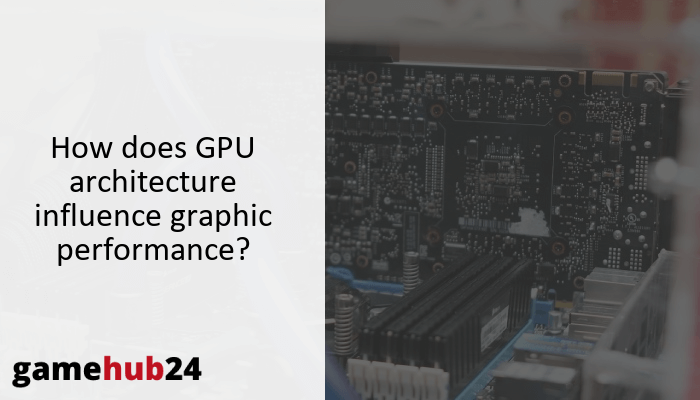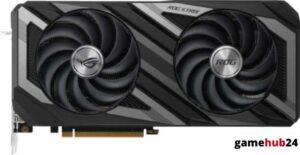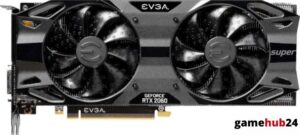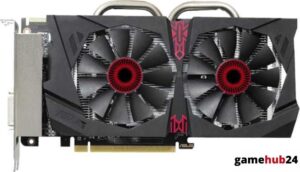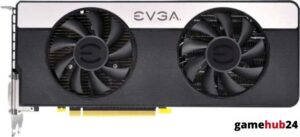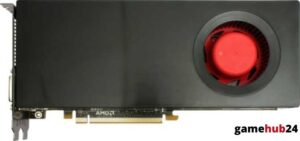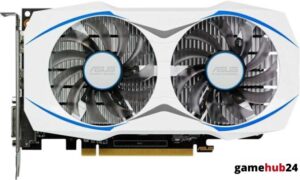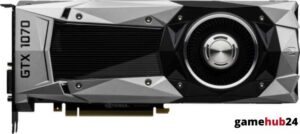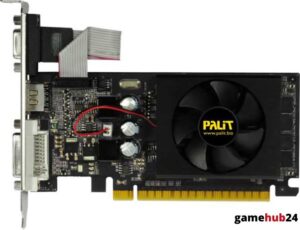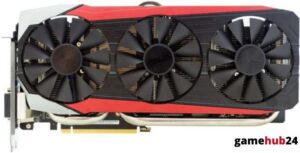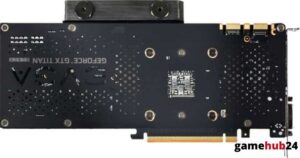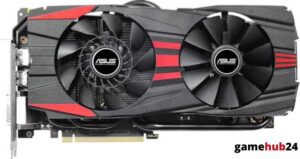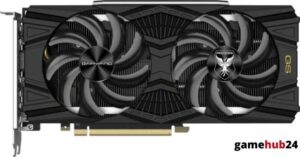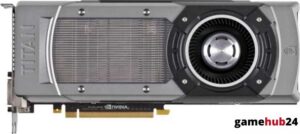The performance and capabilities of professional and gaming applications are greatly influenced by GPU architecture. Comprehending the architecture and operational mechanisms of Graphics Processing Units (GPUs) yields significant understanding of their influence on diverse software applications.
GPUs are specialized circuits that speed up image production. They are essential for running complicated AI and machine learning programs and producing realistic visuals in games. Their capacity to execute parallel operations sets them apart from CPUs and makes them more effective at handling big data chunks. Tensor Cores and Ray Tracing units are examples of sophisticated parts included in modern GPUs that improve performance. The GPU architecture selection has a big impact on performance and power efficiency, so both pros and gamers need to think carefully about it.
- GPUs are key for rendering images, animations, and videos.
- They excel in parallel processing, handling multiple tasks simultaneously.
- Modern GPUs feature advanced components like Tensor Cores and Ray Tracing units.
- GPU architecture significantly influences performance and power efficiency.
What is a Graphics Processing Unit (GPU)?
Fundamentally, a graphics processing unit, or GPU, is a specialized electronic circuit made to quickly access and modify memory in order to speed up the process of creating images in a frame buffer that will be transmitted to a display device. Realistic pictures and movies may be rendered on your screen for a variety of purposes, including gaming, professional graphics, and everyday computer work, thanks to this robust piece of gear. The power of the GPU rests in its capacity to handle enormous blocks of data in parallel, a feature that makes it far more efficient than CPUs for algorithms requiring this kind of parallel processing.
What is the role of a GPU in a computer system?
The GPU is an essential component of a computer system’s complex architecture. The labor-intensive task of rendering pictures, animations, and movies is assigned to this workhorse. This is especially important for gaming, as the smooth, high-definition images that gamers need are made possible by the GPU’s lightning-fast data processing speed. GPUs are essential for executing sophisticated applications in domains like artificial intelligence (AI), machine learning, and high-performance computing (HPC) in addition to gaming.
How does a GPU differ from a CPU?
Although they are both essential parts of a computer system, the GPU and CPU (Central Processing Unit) have different purposes and structural designs. Often referred to as the computer’s brain, the CPU is excellent at completing a number of challenging tasks swiftly and sequentially. However, because the GPU is built for parallel processing, it is skilled at managing several jobs at once. Because of this, GPUs are especially useful for applications like graphic rendering and machine learning techniques that call for the manipulation and computation of huge data chunks.
As one of the most potent GPUs in the world, Nvidia’s Tesla V100 GPU is built on the Volta architecture. It is a powerful machine for AI and HPC workloads, sporting 5,120 CUDA cores and 640 Tensor cores.
What are integrated graphics solutions?
GPUs that are integrated into the same chip as the CPU are referred to as integrated graphics solutions. Even though this design isn’t as strong as standalone GPUs, it nevertheless provides an affordable option for routine work like editing documents and accessing the web. A dedicated GPU, on the other hand, with its own specialized graphics memory (VRAM), offers a noticeable performance improvement for more resource-intensive tasks like gaming or 3D rendering.
What are the key components of a GPU?
The architecture of the GPU is an intricate combination of several parts, all of which are vital to its functionality. Stream processors (also known as CUDA cores in Nvidia GPUs), compute units, video RAM (VRAM), and in certain contemporary GPUs, Tensor Cores and Ray Tracing units are important parts. Together, these parts enable the GPU to process massive volumes of data at once, which makes it a vital tool for data processing and graphics rendering.
What are stream processors and compute units?
Compute units and stream processors—also referred to as CUDA cores in Nvidia GPUs—are the essential parts of a GPU. They are in charge of carrying out directives and handling information. A GPU may process data more quickly and effectively if it has more stream processors, also known as compute units, which allow it to do more operations at once. This is especially helpful for applications that require processing massive volumes of data at once, like machine learning and 3D rendering.
What is the function of Video RAM in a GPU?
Data that a GPU will process and display is stored in Video RAM (VRAM), which acts as a buffer between the processor and the display. A GPU’s performance can be greatly impacted by its VRAM capacity. Increased VRAM enables the GPU to process demanding tasks with smoother speed, more frames per second, and textures and images with higher resolution. For applications like high-end gaming and professional graphics rendering that call for the handling of massive volumes of graphical data, it’s a vital resource.
Advice: Take into account both the features and the GPU’s raw performance while selecting one for gaming. Real-time ray tracing and deep learning shadow shading capabilities (DLSS) on modern GPUs, such as Nvidia’s GeForce RTX series, can greatly improve game visual quality.
How do Tensor Cores and Ray Tracing enhance GPU performance?
Advanced functionality like Tensor Cores and Ray Tracing units can be found in some current GPUs, such the Turing and Ampere designs from Nvidia. Tensor Cores are specialized hardware that offers notable performance gains over conventional GPU cores, specifically developed to boost AI and machine learning tasks. In contrast, Ray Tracing units are made to provide realistic light and shadow effects in 3D settings, improving the visual realism of simulations and games. These characteristics are the pinnacle of GPU technology, stretching the bounds of data processing and visual rendering capabilities.
What is the significance of GPU architecture?
The design and data processing methods of a GPU are determined by its architecture. It serves as the cornerstone for all GPU functionality, affecting everything from power economy and performance to the kinds of apps that a GPU can execute most efficiently. The choice of GPU architecture is crucial for both professionals and gamers, as different architectures offer differing degrees of performance and features.
How does the Turing architecture improve Nvidia’s GPUs?
With the release of their RTX 20 series, Nvidia unveiled their Turing architecture, which significantly improved GPU design. It brought specialized hardware—RT cores and Tensor cores, respectively—for real-time ray tracing and artificial intelligence. This led to far better performance in AI and machine learning applications as well as more realistic lighting and shadow effects in games. The Turing architecture was a major advancement in GPU technology by increasing performance per watt and power efficiency.
What are the features of AMD’s RDNA architecture?
Compared to their prior GCN design, AMD’s RDNA (Radeon DNA) architecture brought several significant enhancements to its GPUs, which are included in the RX 5000 series. It provides performance that is up to 1.25 times greater per clock and up to 1.5 times more per watt. Better performance and more economical power use are the results of this, especially for gaming applications. Additionally, RDNA created a new compute unit design that boosts performance overall by increasing efficiency and the number of instructions per clock.
How does the Volta architecture utilize parallel computing?
The premium Tesla V100 GPUs from Nvidia feature their Volta architecture, which elevates parallel computing to a new level. It has Tensor Cores, which are specially made for AI workloads and are capable of accumulating computations and mixed-precision matrix multiplication in a single operation. Tasks involving AI and machine learning can now be processed more quickly and effectively. Additionally, Volta unveiled the new streaming multiprocessor (SM) architecture, a powerhouse for high-performance computing (HPC) applications that offers a 50% efficiency boost over the prior Pascal architecture.
How has GPU architecture evolved over time?
Technology and design concepts have always advanced, and this has been evident in the growth of GPU architecture. GPU architectures have continuously pushed the limits of what is possible in graphics rendering and data processing, starting with the early days of fixed-function units and continuing into the present era of programmable shaders and real-time ray tracing. The constant pursuit of higher performance and power efficiency, along with the ever-increasing needs of professional applications and gaming, have propelled this growth.
What were the key advancements in the Pascal and Polaris architectures?
Both AMD’s Polaris architecture and Nvidia’s Pascal architecture marked notable advancements in GPU technology. High-bandwidth memory and simultaneous multi-projection were introduced by Pascal, which was utilized in Nvidia’s 10 series GPUs. This resulted in notable performance gains and more effective memory use. In contrast, AMD’s first design to employ the 14nm FinFET process was Polaris, which enhanced performance per watt and power efficiency.
How did the Kepler and Fermi architectures contribute to GPU development?
The Kepler and Fermi architectures from Nvidia played a significant role in the advancement of GPU technology. The first architecture from Nvidia to completely support the CUDA (Compute Unified Device Architecture) platform was Fermi, which was released in 2010. This allowed the GPU to be utilized for tasks other than graphics rendering. Following Fermi, Kepler was the first Nvidia architecture to prioritize power economy, introducing the SMX streaming multiprocessor design and laying the foundation for today’s GPUs’ power-efficient designs.
What are the improvements in the Navi and Maxwell architectures?
With the introduction of the RDNA architecture and a new compute unit design through AMD’s Navi architecture, which is employed in their RX 5000 series GPUs, performance and power efficiency saw notable increases. In contrast, Nvidia’s Maxwell architecture represented a significant redesign of their Kepler architecture. It was built to give higher performance per watt and introduced new technologies including dynamic super resolution and multi-frame sampled anti-aliasing, paving the way for Nvidia’s future GPU designs to be more power-efficient.
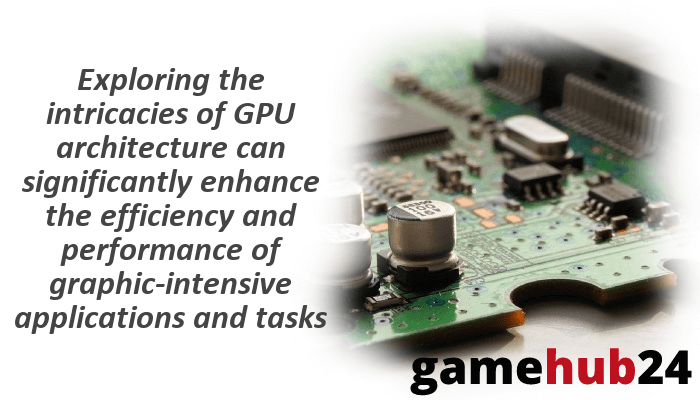
How does GPU architecture impact gaming and professional applications?
A GPU’s performance in professional and gaming applications is largely determined by its architecture. It affects every aspect of the GPU, including its overall processing capacity and power efficiency. For anyone building a workstation for professional graphics and computational duties or a gaming PC, the choice of GPU architecture is crucial because different designs offer different degrees of performance and features.
How does GPU architecture affect gaming performance?
Performance in games can be significantly impacted by a GPU’s design. It assesses the GPU’s capacity to process massive volumes of data rapidly and effectively, render visuals, and manage intricate computations. The frame rate, resolution, and graphic quality of games are thus impacted by this. With features like real-time ray tracing and variable rate shading that improve the gaming experience, modern GPU architectures like AMD’s RDNA and Nvidia’s Turing were created with gaming in mind.
What role does GPU architecture play in professional graphics and computing applications?
A GPU’s architecture is crucial when it comes to professional graphics and computational applications. It assesses the GPU’s capacity to manage intricate calculations and handle substantial data processing, which is essential for jobs like video editing, machine learning algorithms, and 3D rendering. With cutting-edge features like Tensor Cores and high-bandwidth memory that improve performance in demanding workloads, modern GPU architectures like AMD’s RDNA and Nvidia’s Volta are built to excel in these tasks.
How does CUDA enhance performance in Nvidia GPUs?
Nvidia developed the application programming interface (API) paradigm and parallel computing platform known as CUDA (Compute Unified Device Architecture). It enables programmers to perform general-purpose processing on a GPU with CUDA support; this technique is called GPGPU (General-Purpose computing on Graphics Processing Units). Compute kernels can be executed thanks to CUDA, which gives direct access to the parallel computational components and virtual instruction set of the GPU. As a result, Nvidia GPU performance is much improved in applications like machine learning and 3D rendering that call for the processing of massive volumes of data.

